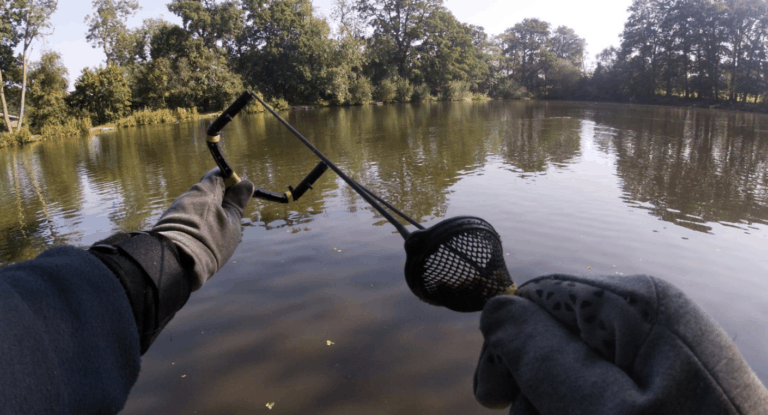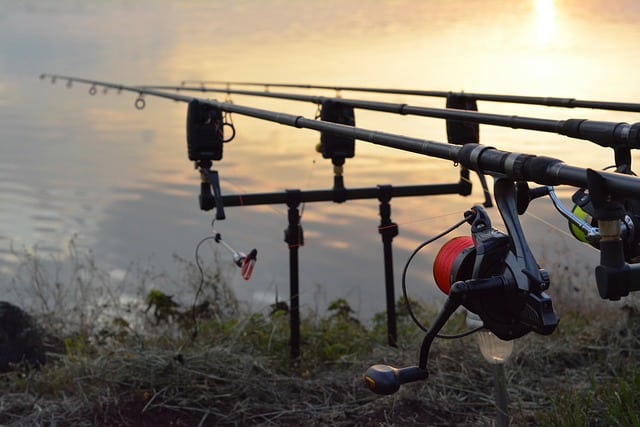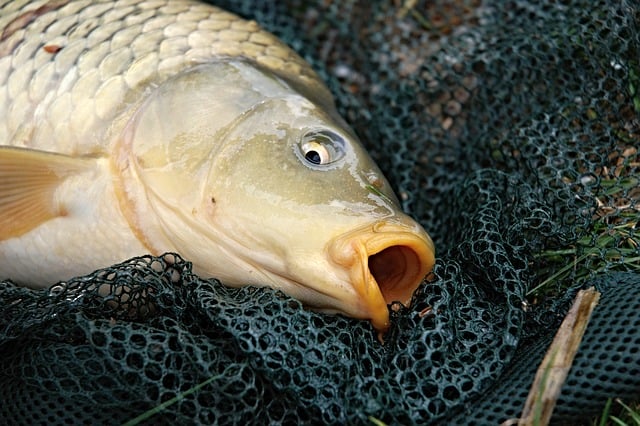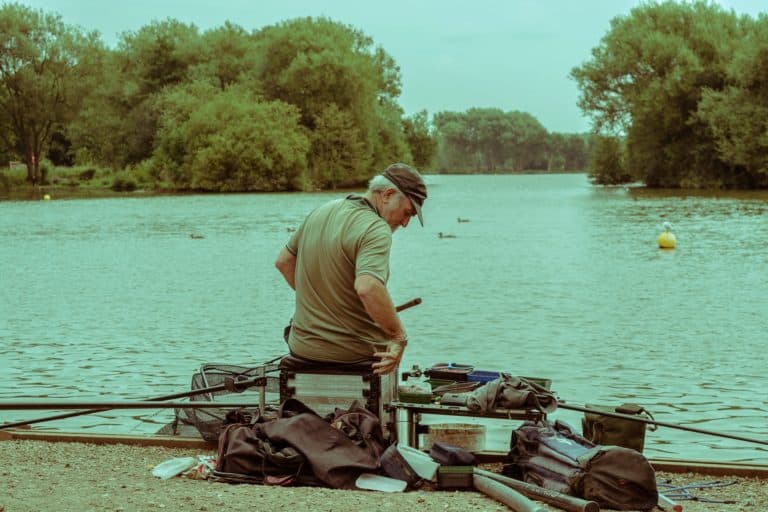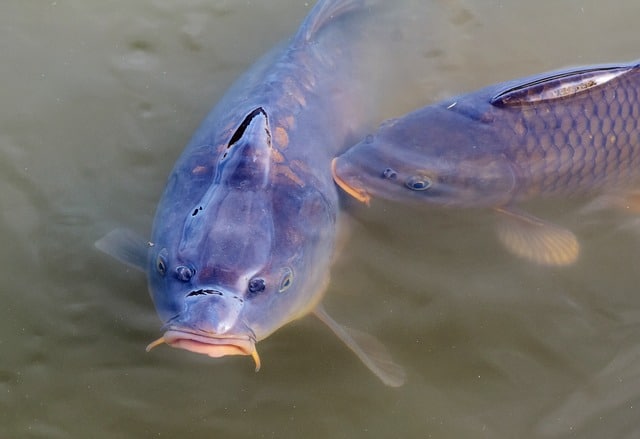How to find carp in a lake

Finding the carp in a lake can be a long and tedious task, however when fishing for carp it’s essential if you want the best results. Having the best rig or worst rig won’t matter in the slightest if your casting out into an area of the lake with no carp present. If you’re struggling with finding the carp, this is the article for you, we understand that it can sometimes be confusing especially if your fishing a lake for the first time. However hopefully that will all change today, we’re going to give you the top tips for locating the fish as quickly and effectively as possible.
First of all, fishing any new large lake will probably result in blanking for the first couple of sessions unless you’re really lucky or the carp are super concentrated in the lake, however don’t let this put you off, keeping consistent will eventually lead to you gaining a better understating of how and where the fish feed. Knowing this information will mean you can adapt your fishing depending on the lake ensuring your have the best chances of a bite.
The more you fish a lake, the more fish you’ll catch! Simple as that, it takes time to find the hotspots and locate the fish but once you do, it’s pretty straightforward.
Depending on what sort of carp you’re going after will also have a huge impact on how many you catch or find on your first session. So let’s get into it!
Seasons:
Carp are cold blooded creatures, which means when it’s warmer they’re going to be much closer to the surface. This is why you often see them breaking the surface of the water when it’s warm. Common places where they show their presence is in the margins, near snags such as Lilly pads and shallows of the lake, when fishing in the summer it’s important to keep an eye out for these places especially. Carp like the shallows as it’s where they’re natural food thrives, these are usually small crustaceans or insects.
Many carp anglers pack up their rods and reels when winter comes around, if this is your yearly routine then it completely fine however carp can still be caught in the winter. We found that fishing smaller lakes was the key for ensuring bites on every session when fishing in the winter, understandably some anglers only want to go for the 20lb plus carp, however we prefer fishing consistently all year round.
The techniques and tactics we use to catch carp in the winter have been surprisingly successful, igniting our passion for all year round carp fishing. There’s no doubt about it, catching carp in warmer whether is easier and maybe more enjoyable but its important to understand although carp slow down their feeding rates, they don’t completely stop. This is when we capitalise on the opportunity using techniques such as single baits, feeder fishing ect.

Not to mention throughout the colder months carp stick much closer together, this means if you spot one, there’s defiantly more fish in that swim. All in all fishing the winter months has its advantages and disadvantages however knowing how to capitalise on the situation you are presented with will eventually lead to success.
When it comes to locating the carp, there’s a few things to consider, irrespective of the season, the time carp are most active is the afternoon, this is because the temperature tends to be warmer, as their cold blooded creatures the metabolism and digestive system are more efficient in a warmer climate.
In extremely cold weather carp can actually stop digesting their food and almost go into a hibernation state. This is when they move extremely slowly and rarely show their presence. You can imagine how frustrating this would be for an angler especially when trying to get the carp to feed. Thats why in the winter, the approach to finding carp is completely different. The amazing fishing spots you had in the summer may be barren and empty in the winter, leaving anglers scratching their heads wondering what happened.
As the carp are bunched up together and unwilling to feed, your bait must give them an incentive to feed. Adding bait enhancers in winter are you best bet.
What we’ve generally seen is that in the winter, the carp are at the bottom of the lake in very deep areas. This is because, in the winter, the deeper areas are also usually warmer than the shallows. However its always good to watch the weather when carp fishing, a slightly warmer than average winter day could be the key to getting a bite.
All in all when it comes to locating the fish, the time of year does have a big impact on how and where you’ll find them, if your remain sharp and observant it’s only a matter of time before your locate the carp.

Observation
Arguably the best piece of fishing advice we ever got was to take our time and thoroughly search the lake for any signs of fish. It’s amazing how many anglers will just walk to the nearest swim, cast out and pray for a bite, but unfortunately, if the carp aren’t in your swim you won’t catch any! Simple as that. When fishing for carp observation is probably the most important thing, having all the best rods, reels and bait won’t matter if your haven’t chosen the right swim.
We know it’s tedious task and every angler is always itching to get a rod in the water when they arrive but it’s this kind of small attention to detail which will double or triple the amount of fish you get in a session. Don’t overlook taking a few stoles around the lake, it will prove to be a very useful tool once you start using it regularly. Unfortunately in the past we made the mistake of choosing swims which we closest to the car, this is the worst thing to do, we learnt the hard way that you have to ‘go look for the carp, they won’t come looking for you’.
As exciting as it is, the best thing to do when you arrive is to leave your gear in the car and take a couple of laps around the lake. This will ensure your not tempted to go for an easy/convenient swim and should mean you get more out of that trip.
It’s good to observe every aspect of the lake and try to look for any signs of fish. Fish breaking the surface is a tell-tale giveaway of where the carp are but sadly it is unlikely to spot. Here’s a list of some more common things to look out for.
What you really want to keep your eyes peeled for is more subtle signs, these include:
- Movement in the reeds
- Shadows in the margins and shallows
- Bubbles
- Gulping air at the surface
- Fish hovering close to the surface
- Discolouration of the water
We’d recommend don’t waste your time choosing a swim until you having spotted some signs of the carp.
It is always important to look all around the lake, sometimes the biggest carp can be directly below you and you won’t know.
All in all observation is crucial for finding the carp, there’s no two ways about it, here’s a video which should help give you some more examples of the kind of things to look for.
Polarised sunglasses really help to spot the fish and we take them on every session, here’s a link to the ones we use, after having tried a few different pairs, the fox polarised sunglasses really made a difference when it came to spotting carp. Fox Polarised sunglasses (Check current price on Amazon)

Wherever your fishing, the glare from the sun can be an absolute pain when your trying to spot fish, we found polarised sunglasses really helped, not only with spotting the fish but also for minimizing the chances of getting a headache due to constant glances at the lake.

But what if I can’t spot any fish at all?

If you’re struggling to find any clues of where the fish may be and you don’t want to go out a buy super fancy fish finder, check with a fellow angler. Asking someone who’s got lots of experience fishing a particular lake, is almost like a cheat method of getting all the information you need for a bite super fast. It’s not something to be ashamed of, having asked fellow anglers for help we found ourself hooking carp after carp after applying what they’d told us.
If you’re certain that there are fish in the lake but you can’t spot them, you need to bring them to you. This is a very effective tactic we often used when fishing, this method concentrates the carp in a certain location making them much easier to catch.
This is called pre-baiting, it is a time-consuming task but after a few days of pre-baiting a spot, you’ll often find it to be red hot with fish, this is when your swim is ready for a rig.
When pre-baiting, you have a variety of options and techniques you can use. It can be as simple as spreading a few kernels of corn across your swim and as complex as using a spod to repeatedly hit your target.
What we like to do is to use groundbaits, these can be flung out in a sling, jammed in a PVA bag or squeezed into a method feeder, it’s pretty much the most versatile bait you’ll come across. Attracting the fish when you can’t see them is the best plan of action.
So there you have it a quick guide on how to find carp in a lake, if you found this article useful then feel free to check out some of our others @carpreeviews.co.uk


